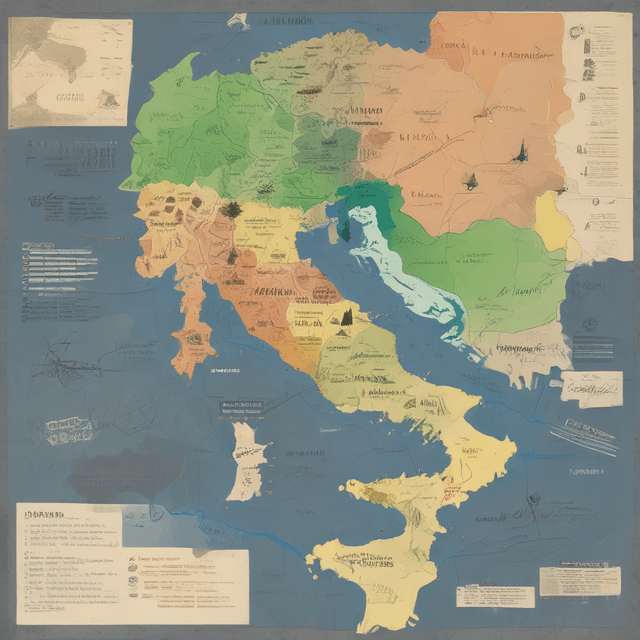
| Origin | Vulgar Latin dialects spoken across the former Western Roman Empire |
| Key Characteristics | Distinct vocabularies • Distinct grammars • Distinct writing systems • Challenging communication between speakers of different regional varieties |
| Linguistic Diversity | Highly fragmented and regionalized, lacking a dominant standardized version |
| Reasons for Fragmentation | Political fragmentation of the post-Roman world, with numerous competing kingdoms, principalities, and city-states in the Italian peninsula |
The "Italian" languages refer to a diverse group of related Romance languages that emerged from the Vulgar Latin dialects spoken across the former Western Roman Empire. Unlike in our timeline, where a more unified Italian language developed, the various Italic linguistic varieties remained highly fragmented and regionalized, never fully coalescing into a dominant national standard.
The Latin spoken across the Italian peninsula and surrounding regions during the Roman imperial era gradually diverged from the literary standard, evolving into a collection of distinct regional Vulgar Latin dialects. As the Western Roman Empire fractured in the centuries following the "Crisis of the Third Century", these local speech patterns became increasingly isolated and differentiated.
Without a centralized political authority to promote a single standardized version, the Vulgar Latin varieties diverged significantly, developing unique vocabularies, grammars, and writing systems over the medieval and early modern periods. This linguistic fragmentation mirrored the political fragmentation of the Italian peninsula into numerous competing kingdoms, principalities, and city-states.
While sharing common roots in Vulgar Latin, the various Italian languages today exhibit vast differences that often make them mutually unintelligible. Some of the most prominent regional varieties include:
While these represent some of the largest and most distinct Italian languages, there are countless other sub-regional dialects and micro-languages found across the Italian peninsula and surrounding islands.
Due to their shared Vulgar Latin origins, the various Italian languages exhibit a high degree of structural and lexical similarity. However, the centuries of divergent evolution have produced such significant variations that communication between speakers of different regional varieties is often extremely difficult, if not impossible.
Attempts have been made over the centuries to establish common standards or "koine" versions of Italian, but these have largely failed to gain widespread acceptance. The political fragmentation and fierce local identities of the Italian states have hindered the development of a truly unified national language.
Today, the various Italian languages continue to thrive, each with their own literary traditions, cultural institutions, and linguistic pride. While Tuscan-based "Italian" may have the widest recognition, it remains just one of many equally valid Romance varieties found on the Italian peninsula and surrounding regions.
The persistence of linguistic diversity within the former Western Roman territories has had a profound impact on the cultural, political, and intellectual development of the Italian world. The lack of a dominant national language has fostered a rich tapestry of regional literatures, artistic traditions, and identities, often fiercely defended by local populations.
This linguistic fragmentation has also shaped the geopolitical landscape, with individual city-states, kingdoms, and principalities forging their own distinct diplomatic and economic ties. The Italian languages have spread globally along with the commercial and colonial expansion of these various regional powers, further diversifying the linguistic landscape.
Ultimately, the continued coexistence of multiple Italian languages, rather than the emergence of a single standardized form, remains a defining feature of the Italian cultural sphere in this alternate timeline. This linguistic diversity is a testament to the resilience and adaptability of the Vulgar Latin dialects that took root across the former Western Roman Empire.